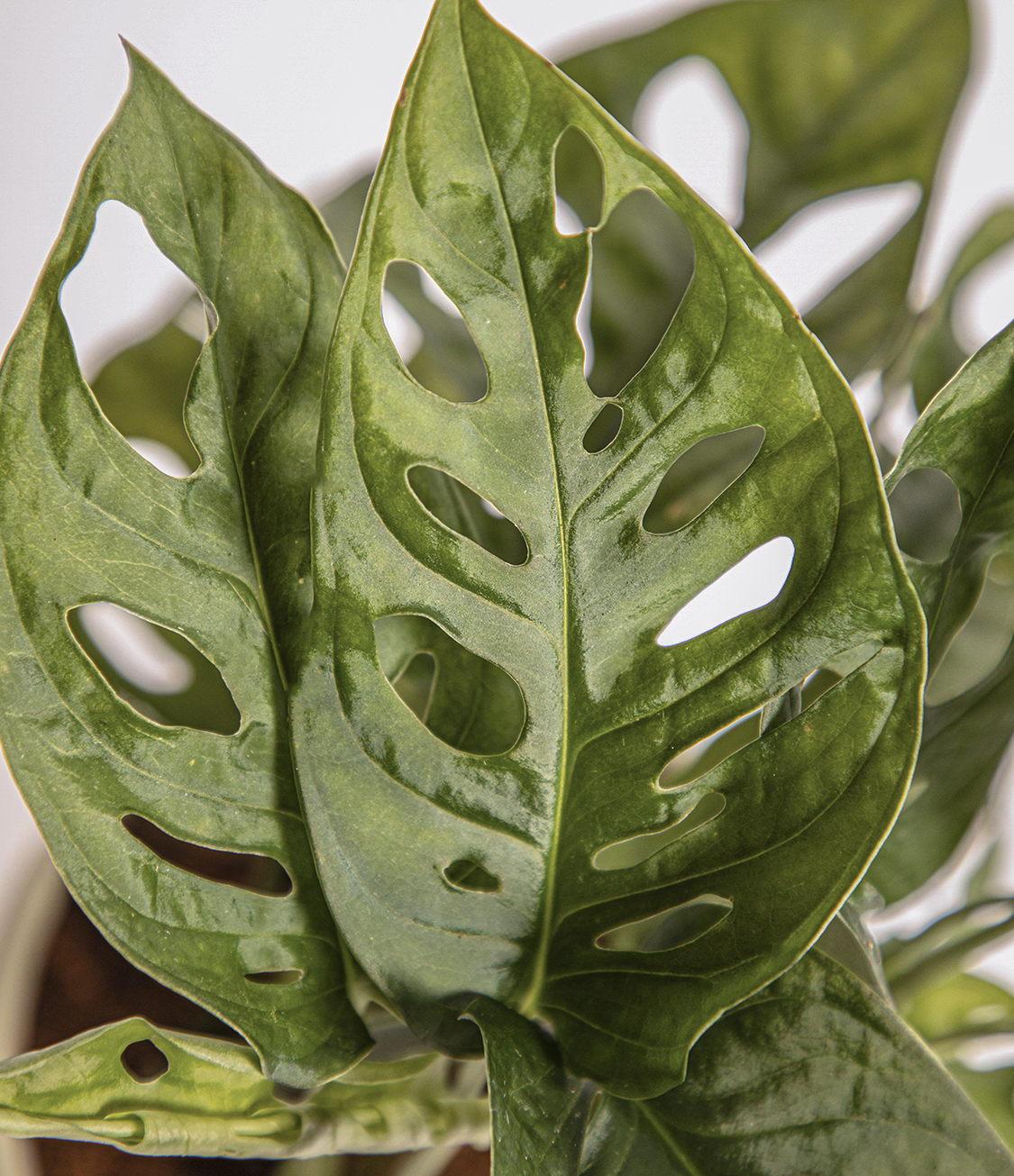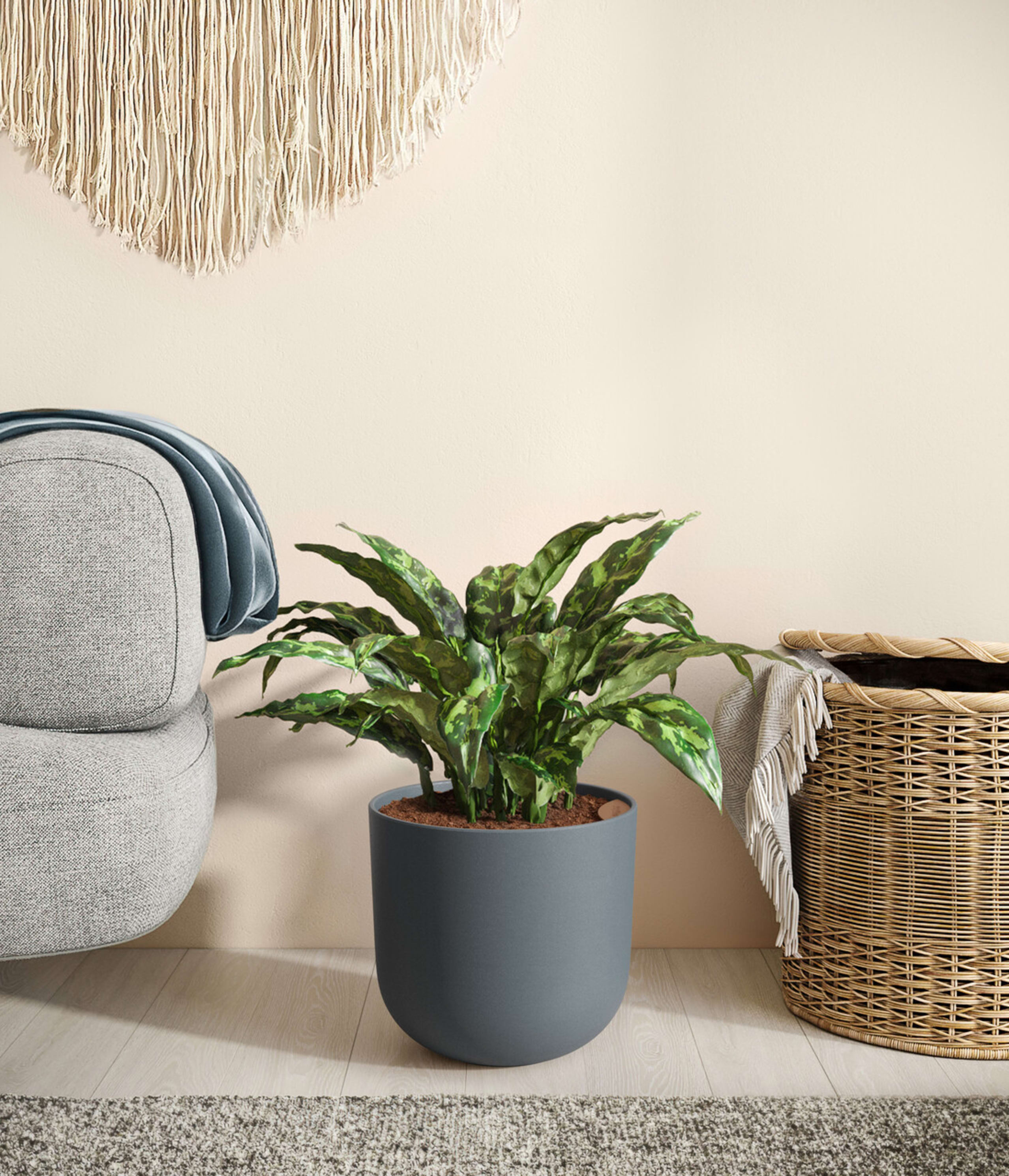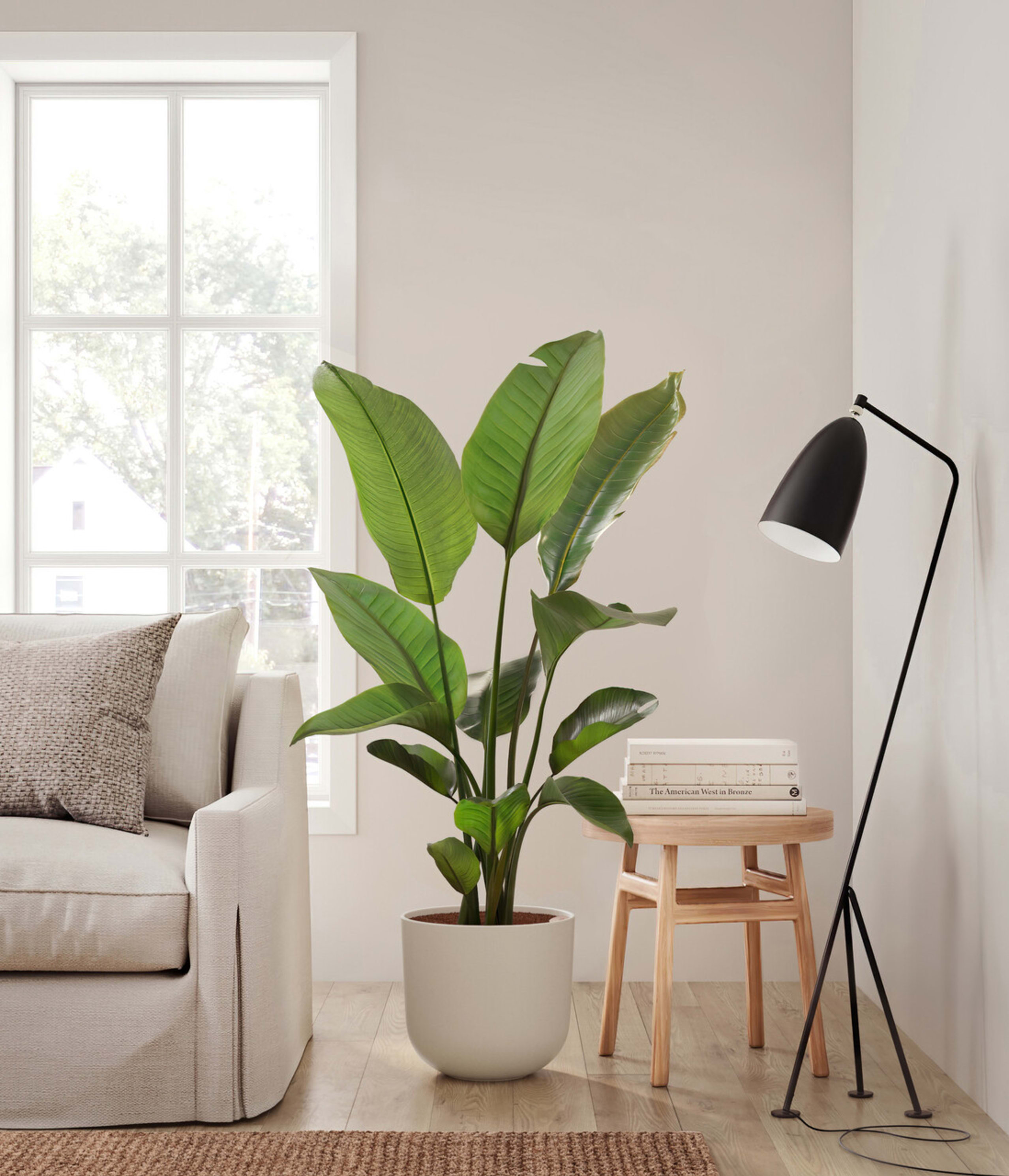About Monstera Adansonii
Native to Southern Mexico and Central America, Monstera Adansonii is loved for its bright and forest green colored heart-shaped foliage. Its famously perforated leaves, called fenestrations, are a unique adaptation that let sunlight pass through its broad canopy and reach the forest floor.
Their unique patterns are genetically predetermined when the leaf sprouts, and with time, they become more common while the leaves get larger and darker.
Other common names
- Adanson's Monstera
- Swiss cheese plant
- Five holes plant
- Swiss cheese vine
How Often Should I Water My Monstera Adansonii?
Caring for Monstera adansonii is easy, but they can be finicky with their water needs. With easyplant, watering your Monstera Adansonii is a no-brainer. Check the reservoir once a month and fill it when empty, and you're all set!
Without an easyplant, keep watering your plant about once a week in indoor houseplant settings; the soil should remain moist - not soggy. With such a picky houseplant regarding watering needs, a self-watering pot can help ensure proper hydration levels.
Monstera Adansonii Light Requirements
Monstera Adansonii grows best in a space with bright indirect light, where the sun rays are diffused, and can also adapt to spaces with bright direct light, where the sunlight streams inside directly. Avoid placing it in spaces with low light or spaces without natural sunlight.
Though this plant can cope with poorer lighting conditions, you may observe lankier foliage in low-light conditions. A location close to a southern-facing, western-facing, or eastern window would be ideal for creating lush and vibrant leaves. Receiving optimal lighting will also help keep the characteristic fenestrations intact.
Monstera Adansonii Plant Care
On your Monstera Adansonii's first few days at home, it may lose one or two leaves as it adjusts to its new home. This is no reason for concern. Simply cut the leaf, and look forward to new and better-adjusted leaves.
To help it grow optimally and evenly, occasionally dust the leaves and rotate the pot by a ¼ turn once a month. To maintain its aesthetic shape and height, you may periodically prune it to your liking. To grow it upwards instead of sideways, you may attach the leaves to a totem or moss pole and watch it grow tall.
How Big Do Monstera Adansonii Plants Grow?
Monstera Adansonii can grow up to three feet wide and climb up to eight feet tall with the support of a totem or moss pole. It can produce new leaves every few weeks, and with time the leaves get larger, darker, and with more of the signature fenestrations.
Monstera adansonii has the potential to reach soaring heights of eight feet when indoors, and with its vining capabilities, it can extend 13 feet long, growing up to two feet in a single season. With perfect growth requirements met, these remarkable plants can mature within 2-3 years;
Temperature & Humidity
Monstera adansonii is a tropical plant that isn't exactly hardy to cold weather. It loves temperatures ranging from 55-85°F (13-27 °C), which are pretty much the average conditions of most households, so these plants flourish in them! To ensure your Monstera stays healthy and happy, try not to drop its temperature below 50°F as it won't be able to tolerate lower temperatures than this.
To keep your Adansonii in its best health, maintain the humidity near or above 60%. The soil should be slightly damp when you water it - approximately once a week. If you live in a particularly dry home, use a humidifier to maintain higher moisture levels. Placing your plant near a pebble tray, in a humid bathroom or a kitchen, or grouping your houseplants can also help to increase the humidity around them.
Are Monstera Adansonii Toxic for Pets & Kids?
If ingested, Monstera Adansonii may be moderately toxic, so keep it away from curious children and pets. While calcium oxalate crystals are not life-threatening, they can still be found in various parts of the plant, such as its stems, leaves, and roots.
To avoid any unnecessary strain on your child or pet's health, it is essential to keep an eye out for signs and contact a medical professional if need be. Ingestion of the mildly toxic Monstera Adansonii by humans can lead to oral irritation, pain, mouth, tongue, and lips swelling, excessive drooling, vomiting, and difficulty swallowing.
Dogs and cats often have similar symptoms, including copious drooling, throwing up, difficulty swallowing food or treats, pawing at their mouth in discomfort, a burning sensation inside the Oral Cavity, and obvious irritation.
Troubleshooting Common Problems with Monstera Adansonii
If you notice leaves are turning yellow or edges are becoming scorched or brown, relocate the pot to a more brightly lit area. If you notice leaves are becoming droopy, relocate the pot to a less brightly lit area. If you find your plant's leaves curling, it is usually a sign that they are not sufficiently watered or given enough humidity. Occasionally though, it can be caused by overwatering, disease-carrying pests, and even extreme heat. Too much water can be damaging to your beloved monstera adansonii plant! If you see dark-brown spots on the lower leaves or if the stems appear soft and mushy, these may be signs of root rot. Remove any rotten stems and check your watering frequency - make sure to let the soil dry out between waterings. Use well-draining soil and a pot with proper drainage holes to prevent water from accumulating in the pot, causing root rot.
Frequently Asked Questions about Monstera Adansonii Plant
How much sunlight does a Swiss cheese plant need?

The Swiss cheese plant flourishes in its native environment when it's situated beneath leafy trees. It prefers indirect sunlight or filtered light but can tolerate some direct sun for a few hours each day.
Do Monstera Adansonii like to be misted?

No, misting is not recommended for Monstera Adansonii as it may lead to fungal disease. Instead, consider other methods to maintain humidity, such as grouping it with other plants, utilizing a pebble tray, or using a humidifier.
How do you care for a Swiss cheese plant indoors?

Caring for a Swiss cheese plant indoors is straightforward and easy. Ensure it's situated in a spot with plenty of indirect sunlight, such as near a bright window or near sheer curtains. Water your Monstera once per week or with a self-watering system like easyplant, and maintain humidity levels by misting the leaves regularly or keeping other plants grouped together.
How often do you water a Swiss cheese plant?

Monstera Adansonii typically requires weekly watering. Ensure the soil is slightly damp before you water again, and check for signs of overwatering, such as root rot. With easyplant's self-watering system, just fill the easyplant reservoir once a month, and you'll avoid potential watering issues.
How do I keep my Monstera Adansonii healthy?

To keep your Monstera adansonii healthy, ensure it is in a light spot that receives plenty of indirect sunlight. Water your plant once weekly or use easyplant's self-watering system to maintain consistent moisture levels. If necessary, use a humidifier to maintain higher humidity levels.

 Small Plants
Small Plants Medium Plants
Medium Plants Plants Collections
Plants Collections Large Plants
Large Plants Huge Plants
Huge Plants